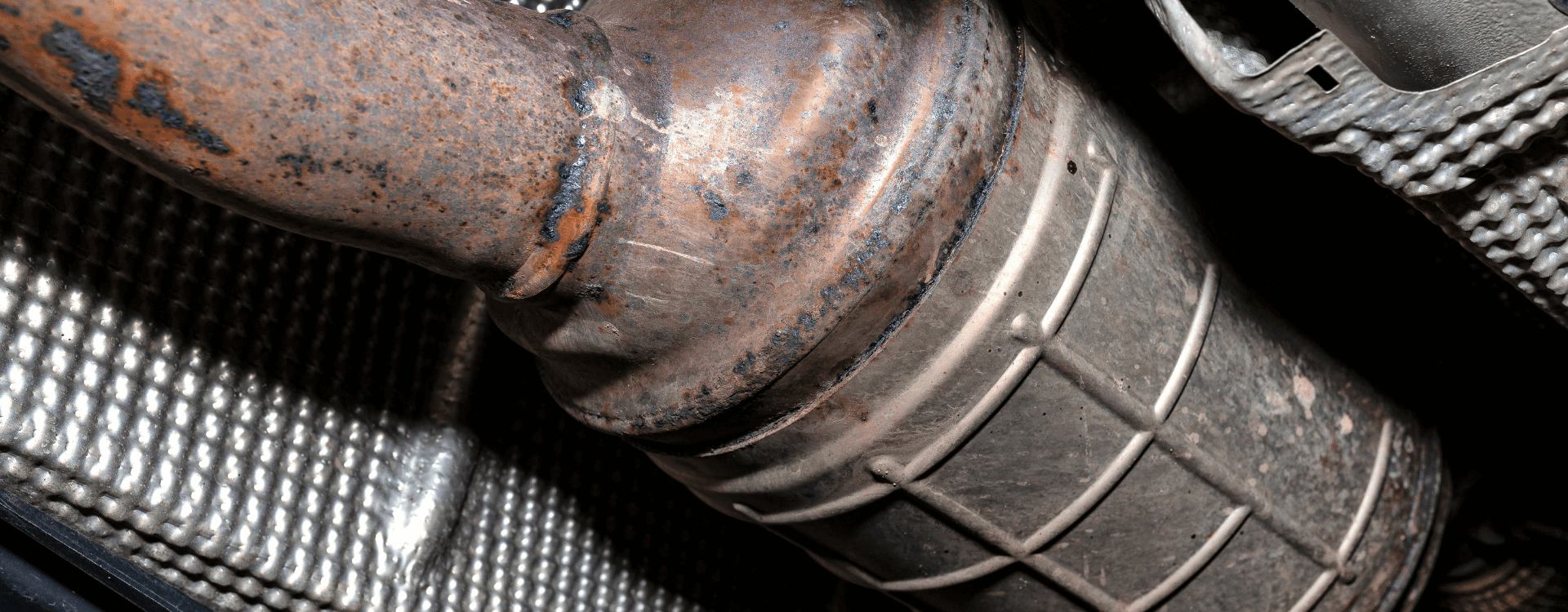
Why does my catalytic converter turn red ?
Routinely, you check your car's levels and make sure everything is fine, that there are no leaks. But this time you notice something odd: the catalytic converter has turned bright red. While this is a rather pretty colour, it raises questions because it is not the usual colour of a catalytic converter. Does this mean that we should be concerned ? That's what we wanted to know about the why and the how.
How does a catalytic converter work ?
First of all, let's briefly review how the catalytic converter, also known as the catalytic converter, works. Installed on both petrol and diesel cars, the catalytic converter plays a very important role in exhaust gas treatment. For this reason, it is strongly discouraged (and prohibited) to remove the catalytic converter from a car. When a car's engine is running, it inevitably emits fine particles, agglomerating various particularly toxic pollutants, such as nitrogen oxides, carbon monoxide and unburnt hydrocarbons. The catalytic converter plays a filtering role. To this end, it has an internal honeycomb structure which collects and then calcines these various particles once an operating temperature of around 400°C is reached, by means of chemical reactions. It should be noted that the catalytic converter is combined, on modern models, with a particle filter to further reduce polluting emissions. By the time the catalytic converter has been completed, the pollutants have been converted into carbon dioxide and water through chemical reactions. But sometimes not everything goes according to plan...
How to explain this red colouring ?
When a catalytic converter turns red, it has undergone a fairly significant overheating phase. This is materialised by a higher than normal temperature rise, which gives this reddish tone. Let's be clear: this is not a particularly good sign. There are several reasons for this overheating. Here is a selection:
• Overheating: This is unfortunately quite common in cars that do a lot of driving, mainly on short journeys. The catalytic converter does not necessarily have time to warm up, which can lead to clogging.
• A mechanical problem: an engine failure can explain the overheating of a catalytic converter. This can be the case if the manifold is cracked or if the lambda sensor is faulty. In this case, the catalytic converter is no longer able to carry out the chemical transformations correctly, which can lead to its overheating;
• A faulty ignition: if the coils no longer provide the spark, then the circulation of the exhaust gases will not be optimal. The catalytic converter can then choke, which again leads to overheating;
• Catalytic converter failure: the catalytic converter is lined with ceramic. This can sometimes break and therefore no longer dissipate the heat properly, which again leads to overheating. In general, a noisy catalytic converter is rarely a good sign.
Need help with your DPF?
Consult our experts to diagnose the condition of your diesel particulate filter
Test my catalytic converter Check my DPFRemoving a catalytic converter that has turned red
Unfortunately, this is not possible. A catalytic converter that has turned red has experienced severe overheating that has destroyed the internal structure. As a result, the chemical reactions can no longer be carried out efficiently. As a result, you will lose power, consume more fuel and your car's pollution will increase considerably. Don't wait until your next roadworthiness test to work on that faulty catalytic converter. It is not possible to repair a catalytic converter that has overheated. You must therefore replace the part. All professionals are able to do this. Do not attempt to open the catalytic converter yourself in order to work on it; this is dangerous and the overheating causes irreversible damage anyway. The life of a catalytic converter varies greatly, but is usually in excess of 100,000 kilometres. Cars with long journeys are more likely to increase the life of the device quite significantly. Conversely, cars that are predominantly urban tend to wear out their catalytic converters more quickly. Red colouring is not the only symptom of advanced catalytic converter wear. Here is a quick list of the main things that can be used to judge the wear of the catalytic converter:
• The engine loses power, seems less lively and jerks more. This is quite difficult to notice if you drive your car every day;
• Regular stalling occurs, sometimes even at start-up with an unstable idle that gives the impression that the engine is choking;
• Consumption increases quite sharply. For this reason, it is advisable to regularly monitor the average fuel consumption of your car. It is a valuable indicator of the health of your engine. If you notice an increase of more than 10% on your daily journeys, then it's best to speak to a professional for advice;
• The catalytic converter can also become noisy. This happens most frequently when the ceramic is broken and small parts come into contact with the internal structure. Sometimes the noise is very loud and other times it is much quieter.
A major review is needed
If your car's catalytic converter has turned red, then it has overheated. You might think that simply replacing this emission control device would solve the problem. The real source of the problem needs to be checked. This means checking the ignition, the exhaust line and manifold for leaks, and the diesel particulate filter. Check the pressures, mixtures and also any engine settings that may be affecting the operation of the manifold. This analysis work can be tedious but it is necessary to avoid premature wear of your new manifold. Any professional can carry out the diagnostic work. If you are not a mechanical expert, this is the recommended solution. This way, you'll get your car back in perfect working order.
Image sources:
Karolina Osinska / Author: twenty20photos / Licence ID: ASH2QKFWJY - elements.envato.com
